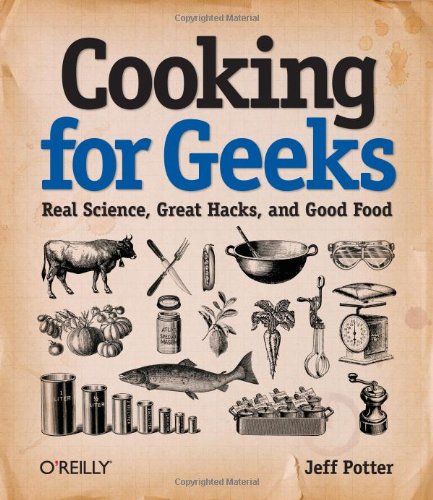

Most ebook files are in PDF format, so you can easily read them using various software such as Foxit Reader or directly on the Google Chrome browser.
Some ebook files are released by publishers in other formats such as .awz, .mobi, .epub, .fb2, etc. You may need to install specific software to read these formats on mobile/PC, such as Calibre.
Please read the tutorial at this link: https://ebookbell.com/faq
We offer FREE conversion to the popular formats you request; however, this may take some time. Therefore, right after payment, please email us, and we will try to provide the service as quickly as possible.
For some exceptional file formats or broken links (if any), please refrain from opening any disputes. Instead, email us first, and we will try to assist within a maximum of 6 hours.
EbookBell Team

4.1
70 reviewsAre you the innovative type, the cook who marches to a different drummer -- used to expressing your creativity instead of just following recipes? Are you interested in the science behind what happens to food while it's cooking? Do you want to learn what makes a recipe work so you can improvise and create your own unique dish?
More than just a cookbook, Cooking for Geeks applies your curiosity to discovery, inspiration, and invention in the kitchen. Why is medium-rare steak so popular? Why do we bake some things at 350 F/175 C and others at 375 F/190 C? And how quickly does a pizza cook if we overclock an oven to 1,000 F/540 C? Author and cooking geek Jeff Potter provides the answers and offers a unique take on recipes -- from the sweet (a "mean" chocolate chip cookie) to the savory (duck confit sugo).
This book is an excellent and intriguing resource for anyone who wants to experiment with cooking, even if you don't consider yourself a geek.
Purée in a food processor or with an immersion blender:
2 cups (660g) butternut squash, peeled, cubed, and roasted (about 1 medium squash)
2 cups (470g) chicken, turkey, or vegetable stock
1 small (130g) yellow onion, diced and sautéed
1/2 teaspoon (1g) salt (adjust to taste)
Notes
There are two broad types of cake batters: high- ratio cakes--those that have more sugar and water than flour (or by some definitions, just a lot of sugar)--and low-ratio cakes—which tend to have coarser crumbs. For high-ratio cakes, there should be more sugar than flour (by weight) and more eggs than fats (again, by weight), and the liquid mass (eggs, milk, water) should be heavier than the sugar.
Consider this pumpkin cake, which is a high-ratio cake (245g of pumpkin contains 220g of water--you can look these sorts of things up in the USDA National Nutrient Database, available online at http://www.nal.usda.gov/fnic/foodcomp/search/).
In a mixing bowl, measure out and then mix with an electric mixer to thoroughly combine:
1 cup (245g) pumpkin (canned, or roast and puree your own)
1 cup (200g) sugar
3/4 cup (160g) canola oil
2 large (120g) eggs
1 1/2 cups (180g) flour
1/4 cup (40g) raisins
2 teaspoons (5g) cinnamon
1 teaspoon (5g) baking powder
1/2 teaspoon (5g) baking soda
1/2 teaspoon (3g) salt
1/2 teaspoon (2g) vanilla extract
Transfer to a greased cake pan or spring form and bake in an oven preheated to 350 F / 175 C until a toothpick comes out dry, about 20 minutes.
Notes